With its succulent and tender meat, the lobster tail is a true delicacy that seafood enthusiasts relish. Whether you celebrate a special occasion or simply want to indulge in a gourmet lobster tail dinner, learning how to cook lobster tail opens up a world of culinary possibilities. From classic boiling and steaming to grilling, baking, or pan frying, various methods suit different tastes and preferences. Each technique unlocks this prized crustacean's exquisite flavors and textures.
In this guide, we will explore how to cook lobster tails and prepare lobster tails correctly so you can savor the rich flavors of this beloved seafood delicacy.
How To Prepare Lobster Tails For Cooking
Thaw The Frozen Lobster Tail
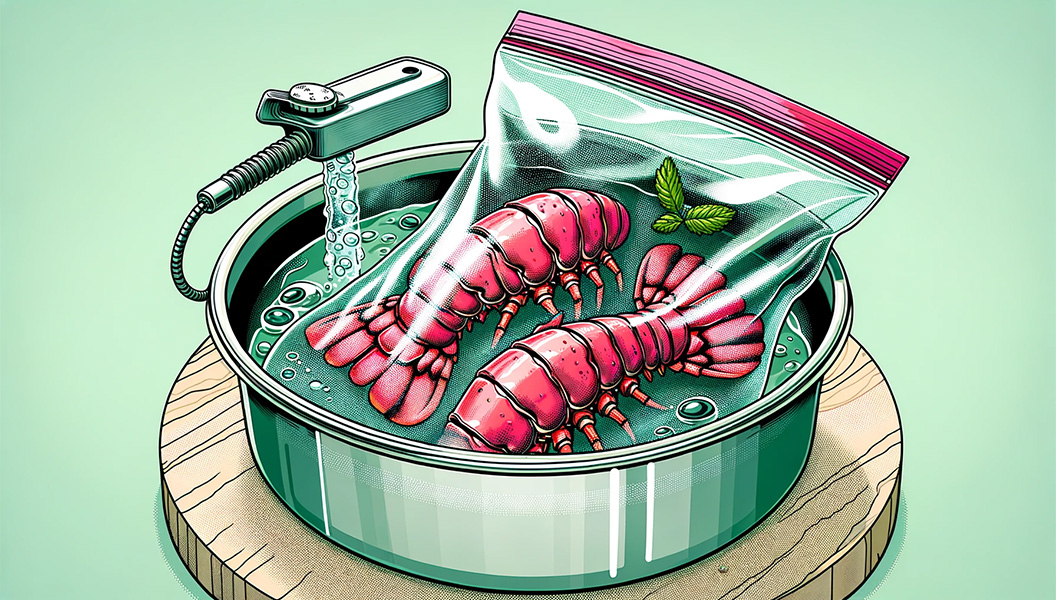
If you are using fresh lobster tails, you can skip this step. However, if you plan to cook frozen lobster tails, the best way is to thaw them first by letting thaw frozen lobster tails slowly in the fridge for 24 hours. To thaw frozen lobster tails faster, place them in a sealed plastic bag and place them in water for 30-60 minutes.
Rinse The Lobster Tails
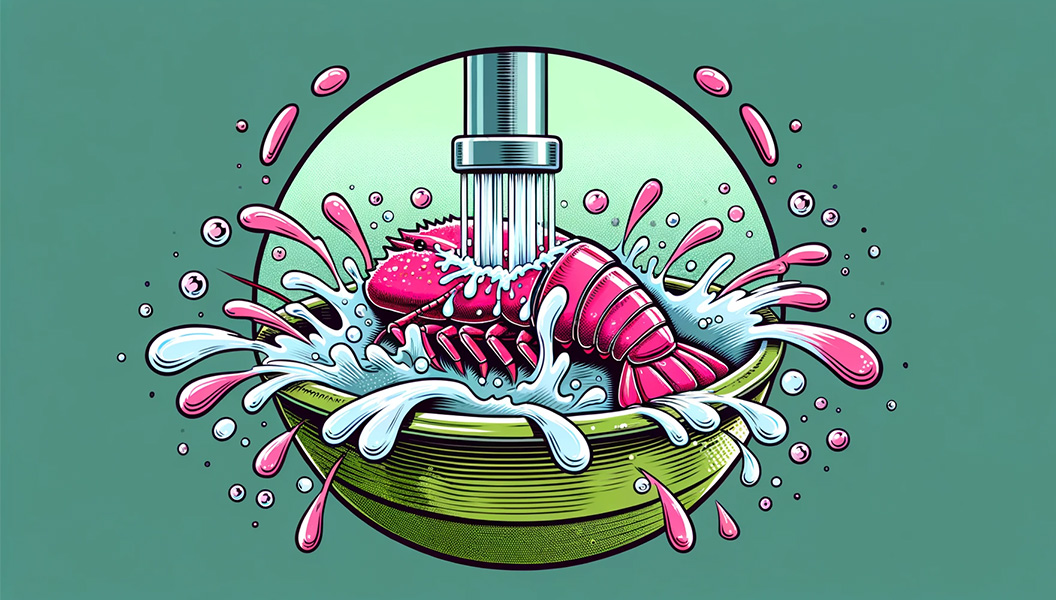
To ensure cleanliness, focus on scrubbing the lobster shell without touching the exposed lobster meat. Rinse the lobster tails under cold water to remove any surface debris or ice crystals. Avoid submerging the tails in the water, as the meat may absorb the liquid, resulting in a watery taste. Delicately dab them dry using a fresh towel or paper towel.
Cut Through The Shell
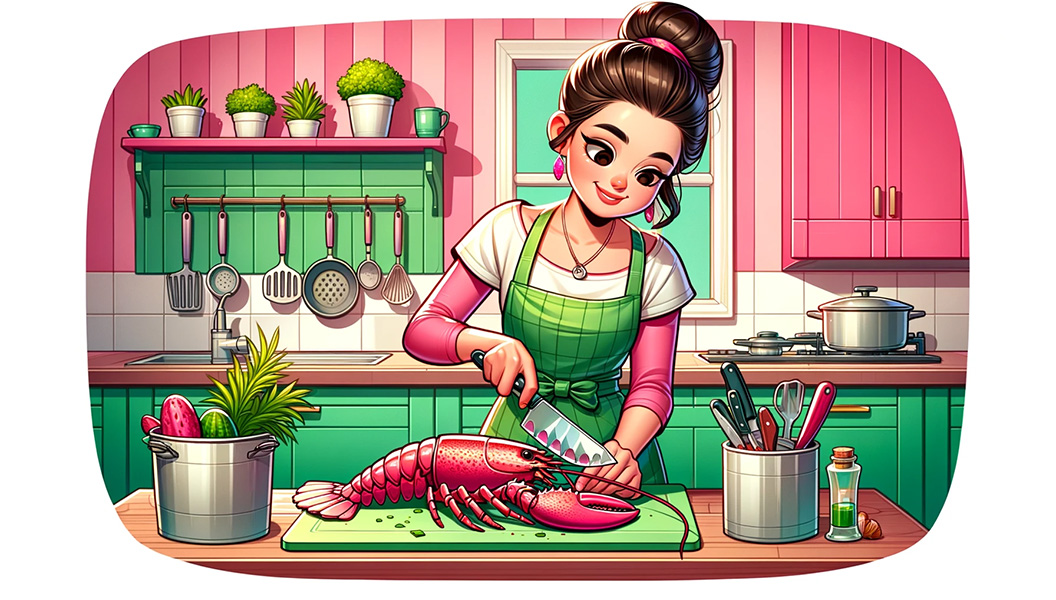
Locate the top of the lobster tail, which is the rounded side attached to the body. This side of the lobster tail will have a small opening or slit that allows access to the meat. With caution, slice through the upper part of the shell lengthwise utilizing kitchen shears or a keen knife. Start from the opening end and cut all the way through the tail, but not through the underside. Take care to avoid cutting into the meat itself.
Open The Shell
Gently spread the shell open along the cut you made. The shell should easily separate, revealing the meat inside. If a thin, translucent membrane covers the meat, you can remove it by peeling it away with your fingers or a small knife.
Clean The Vein
In some cases, the tails may already be deveined, while in others, you may need to remove the vein yourself. Search for a dark vein extending along the entire lobster tail. This is the digestive tract and can sometimes contain grit or impurities. Utilize either a small knife or your fingers to extract the vein by gently pulling it out from the tail. Thoroughly rinse the tail under cold water to eliminate any remaining debris.
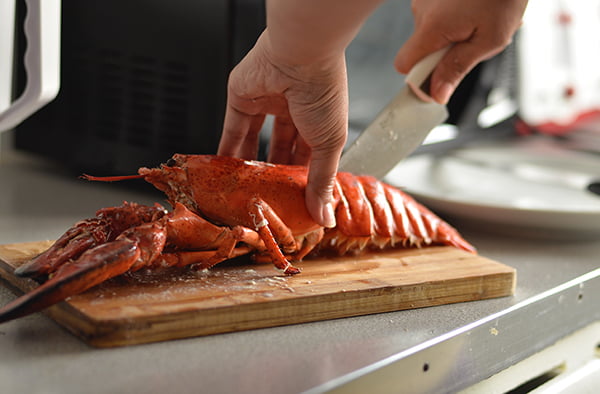
How To Cook Lobster Tails
Boiling
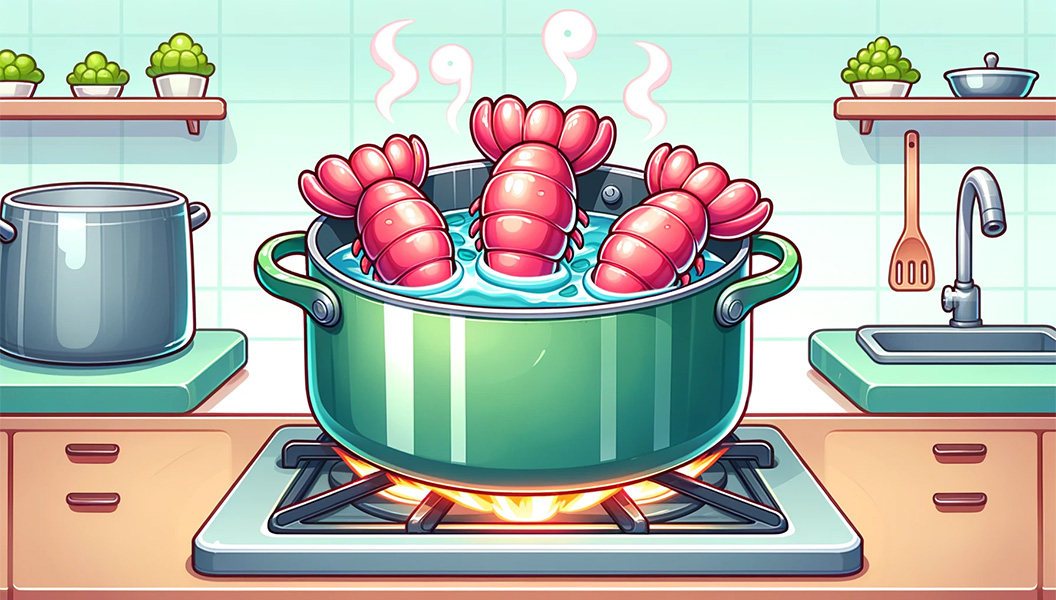
Boiled lobster tails are the most popular and straightforward method for cooking lobster tails. Here is how to boil lobster tails:
- Take a sizable pot and fill it with an ample amount of water to immerse the tails completely.
- Add salt to the water and bring it to a rolling boil.
- Once the water is boiling, carefully add the lobster tails and cook them based on the time chart listed below. Once cooked, the shells will transform into a vibrant red hue, while the lobster meat has an opaque appearance and firm texture.
- Once cooked, remove the lobster tails from the boiling water and cool them immediately with fresh water to prevent overcooking.
Lobster Tails Steaming Times (Tail Quantity 2 - 6)
Tail Size | Cooking Time |
|---|---|
3oz - 6oz | 3 - 5 Minutes |
6oz - 7oz | 5 - 6 Minutes |
8oz - 10oz | 6 - 8 Minutes |
10oz - 16oz | 8 - 10 Minutes |
16oz - 20oz | 10 Minutes |
20oz - 28oz | 10 - 13 Minutes |
Steam Lobster Tails
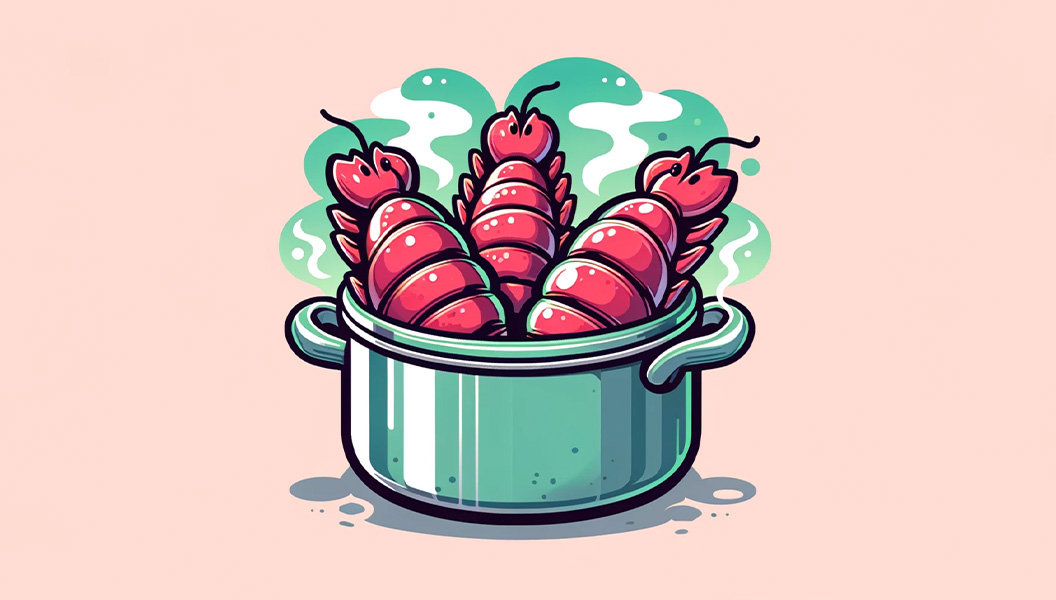
Steaming is a gentle cooking method that helps retain lobster meat's natural flavors and tenderness. You can either steam the whole lobster tails or butterflied lobster tails. Here is how to cook lobster tail using the steaming method:
- Select a spacious pot to accommodate your lobster tails, and ensure it has a well-fitting lid.
- Place a steamer basket or an upturned colander in the pot so lobster tails are not submerged in the water.
- Pour in water to a depth of about 2 inches.
- Place the lid on the pot and heat the water until it reaches a boiling point.
- Once the water is boiling, carefully add the lobster tails to the steamer basket and cover the pot.
- Steam the lobster tails using the lobster tails steaming times below.
- Once you have reached your cooking time, remove the pot from heat using a tong or glove and check one of the tails. You can check for doneness by inserting a fork or meat thermometer into the thickest part of the tail meat. Once cooked, the lobster meat is opaque and has a firm texture.
Lobster Tails Steaming Times (Tail Quantity 2 - 6)
Tail Size | Cooking Time |
|---|---|
3oz - 6oz | 4 - 6 Minutes |
6oz - 7oz | 6 - 8 Minutes |
8oz - 10oz | 8 - 10 Minutes |
10oz - 16oz | 9 - 11 Minutes |
16oz - 20oz | 10 - 12 Minutes |
20oz - 28oz | 10 - 13 Minutes |
Baked Lobster Tails
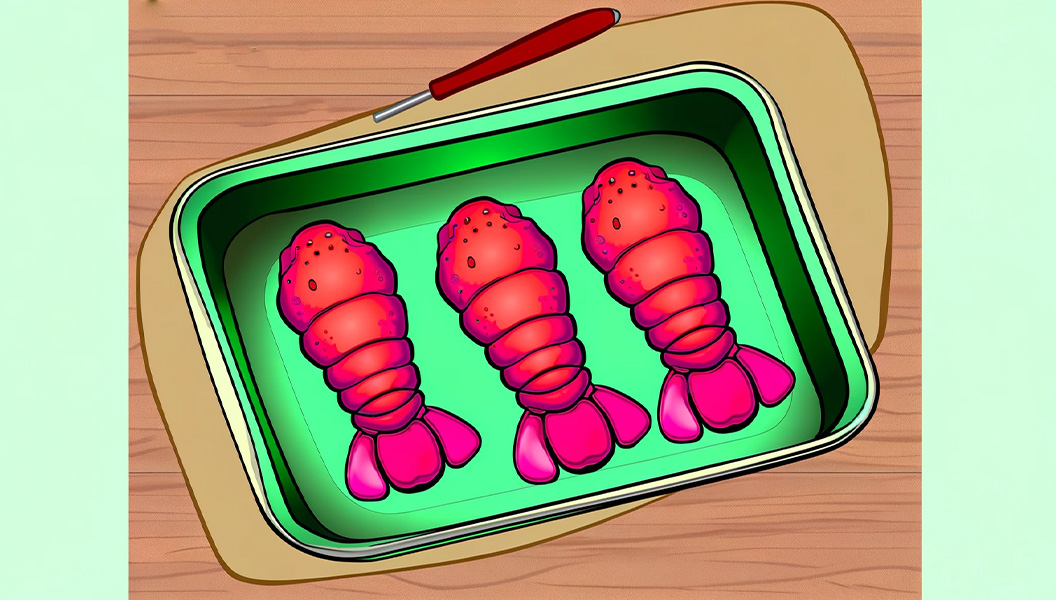
Baked lobster tail is a convenient method to cook lobster tails and requires minimal hands-on attention. Here is how to bake lobster tails:
- Preheat the oven to 400 degrees F.
- Carefully split the tail in half lengthwise using kitchen shears or a sharp knife. Place the halved tails organized on a baking sheet or within a baking dish.
- Brush lobster meat with cooking oil (coconut, ghee, melted butter) and season with salt, pepper, and any desired herbs or spices.
- Place all the tails on a baking sheet and bake in the preheated oven according to the time below.
Lobster Tail Baking Times (Tail Quantity 2 - 6)
Tail Size | Cooking Time |
|---|---|
3oz - 6oz | 8 - 11 Minutes |
6oz - 8oz | 10 - 12 Minutes |
8oz - 12oz | 12 - 15 Minutes |
12oz - 20oz | 15 - 18 Minutes |
20oz - 32oz | 18 - 20 Minutes |
Grilling Lobster Tail
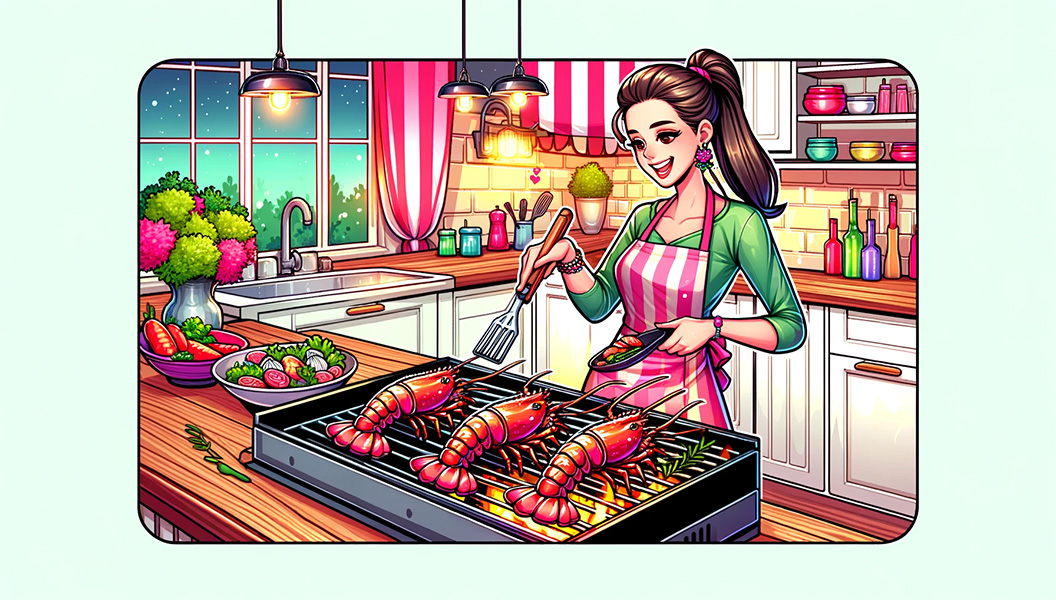
Grilled lobster tail is a delicious and flavorful way to prepare this seafood delicacy. You can either use an outdoor grill or an indoor electric grill. When you grill lobster tails, you impart a delightful smoky flavor and achieve a perfectly charred texture that enhances the overall dining experience. Here is how to grill lobster tails:
- Before grilling, preheat your grill to medium-high heat. If you're using a gas grill, preheat it with all burners on. If you're using a charcoal grill, light the coals and allow them to burn until they turn white and reach medium-high heat. Apply a light oil coating to the grill grates to prevent the lobster tail from sticking.
- Divide the lobster tail lengthwise into two halves using either a sharp knife or kitchen shears. This allows the lobster tail meat to cook evenly.
- Brush the exposed meat with melted butter or oil to keep it moist and prevent sticking. Season the meat with salt, pepper, and any desired herbs or spices to enhance the flavor.
- Position the lobster tails on the grill, with the shell side facing downward, and grill them for approximately 5-7 minutes. Flip the tails over and continue grilling for an additional 3-4 minutes until the meat is thoroughly cooked. As the cooking progresses, the shells will transform into a vibrant red color, indicating that the meat has become opaque and firm.
- Once the grilled lobster tails have reached your desired level of doneness, take them off the grill. Allow them to rest for a few minutes, enabling the juices to redistribute throughout the meat.
Broil Lobster Tail
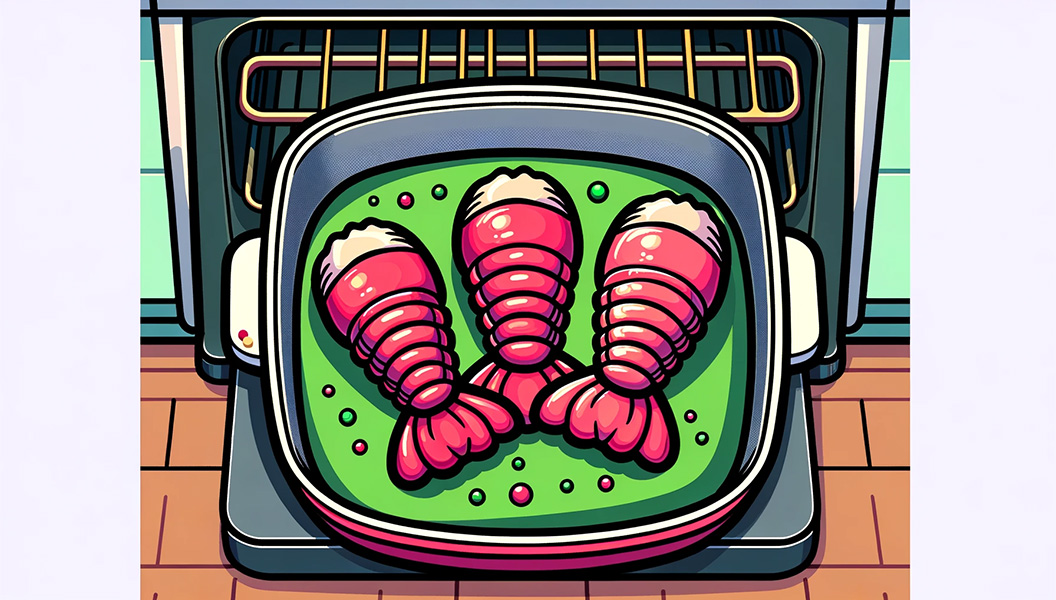
The broiled lobster tails provide the meat with a slightly charred and crispy texture. Here is how to broil lobster tails:
- Preheat the broiler.
- Split the tail in half lengthwise.
- Place the halved tails on a broiler pan or baking sheet with the shell side down.
- Brush the exposed meat with melted butter or oil to prevent dryness. Enhance the flavor by seasoning with salt, pepper, and any desired seasonings to your preference.
- Position the oven rack approximately 6 inches away from the broiler element.
- Broil the tails for around 8-10 minutes until the meat turns opaque and develops a light browning. Monitor the process closely, as broiling can rapidly lead to meat overcooking, and then remove cooked lobster meat.
Pan Fried Lobster Tails
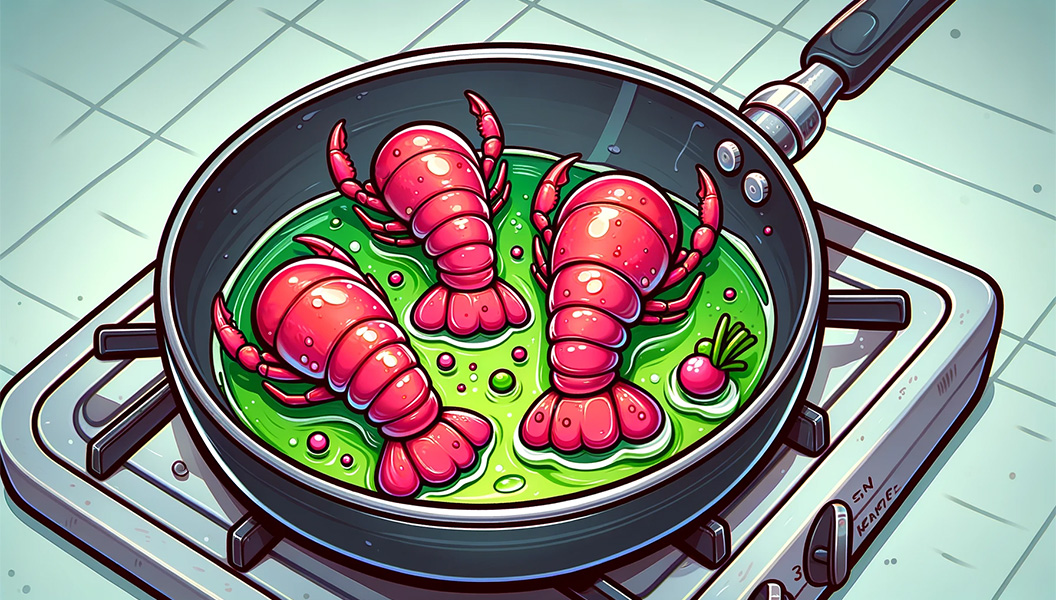
Pan-frying lobster tail is another delicious cooking method that creates a flavorful crust on the outside while keeping the meat tender and juicy.
- Cut through the center of the underside of the tail and remove the lobster meat.
- Gently dry the lobster meat using a paper towel. Season the meat with salt, pepper, and any desired herbs or spices.
- Choose a skillet or frying pan large enough to accommodate the lobster meat. Preheat the pan over medium heat and add a small quantity of oil or butter. Allow the oil or butter to heat until it shimmers or melts and evenly coats the pan's bottom.
- Place the seasoned lobster tail, flesh side down, into the hot pan. Cook the tail for about 3-4 minutes, allowing the meat to sear and develop a golden-brown crust. Using tongs or a spatula, flip the tail over and cook for an additional 2-3 minutes on the shell side.
- Lower the heat to a medium setting and cook the lobster tail until the meat becomes opaque and thoroughly cooked. The cooking time will depend on the tail size but typically ranges from 5-8 minutes in total.
- Once cooked, remove the pan-fried lobster tail from the heat. Let it rest for a few minutes, enabling the juices to redistribute throughout.
Air Frying Lobster Tail
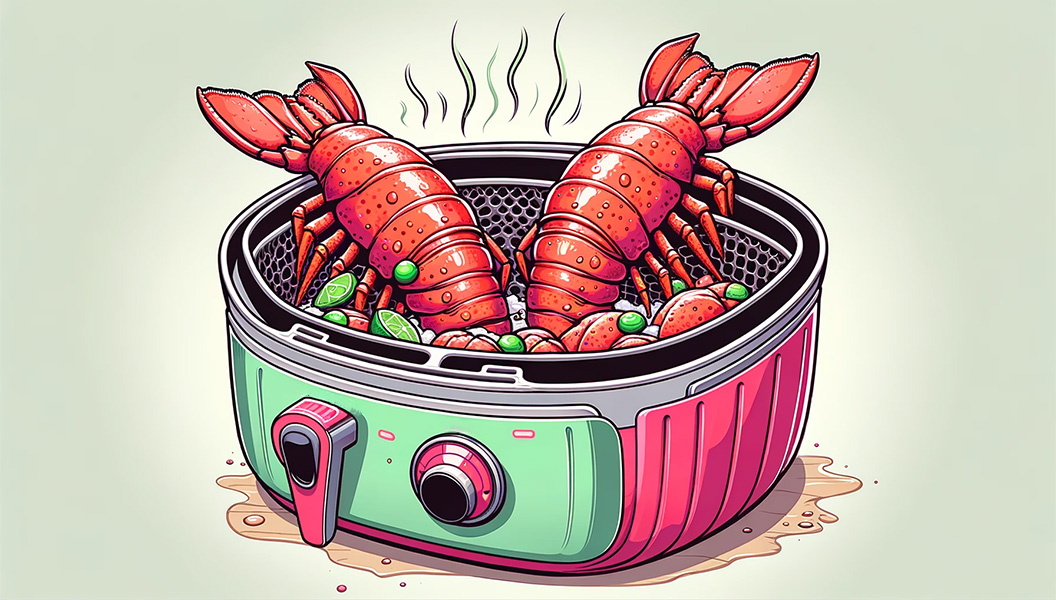
Air-frying lobster tail is a convenient and delicious way to enjoy this seafood delicacy with a crispy exterior. Here's a step-by-step guide on how to air-fry lobster tail:
- Preheat your air fryer to 400°F (200°C) for a few minutes to ensure it reaches the desired temperature.
- With precision, cut through the top of the shell lengthwise using either kitchen shears or a sharp knife. Start from the opening end and cut all the way through the tail, but not through the underside. Gently spread the shell open to expose the meat while keeping the shell intact. You can also remove the thin membrane covering the meat if desired.
- Brush the exposed meat with melted butter, olive oil, or other cooking oil to enhance its flavor and moisture. Flavor the meat with salt, pepper, and any preferred herbs or spices. This adds extra taste and helps to create a delicious crust.
- Once the lobster tail is seasoned, place it in the air fryer basket, flesh side up. It's important to keep the shell intact to maintain the tail's shape and protect the meat.
- Close the air fryer and cook the lobster tail at 400°F (200°C) for about 8-10 minutes. The cooking time may vary slightly depending on the tail size, how many lobster tails you cook, and your specific air fryer model.
- For optimal cooking precision, employ a meat thermometer to verify the internal temperature of the lobster tail.
- Once cooked, remove the air-fried lobster tail from the air fryer and let it rest for a few minutes. After your air fryer has cooled, don't forget to clean your air fryer to help maintain its peak performance.
How To Butterfly Lobster Tails
To butterfly a lobster tail, you need to make a cut through the top of the shell and flesh, then gently separate the halves while ensuring the meat remains connected to the shell. This technique creates an attractive presentation and allows for easier seasoning and grilling. Below is a detailed step-by-step guide on how to butterfly a lobster tail:
Prepare The Lobster Tail
Begin with thawed frozen lobster tails or fresh lobster tails and position it on a cutting board, ensuring that the back (top) side faces upwards.
Locate The Starting Point
Identify the end of the tail where the hard shell starts to curve and the soft underside begins. This is where you'll begin your cut.
Cut Through The Top Of The Shell
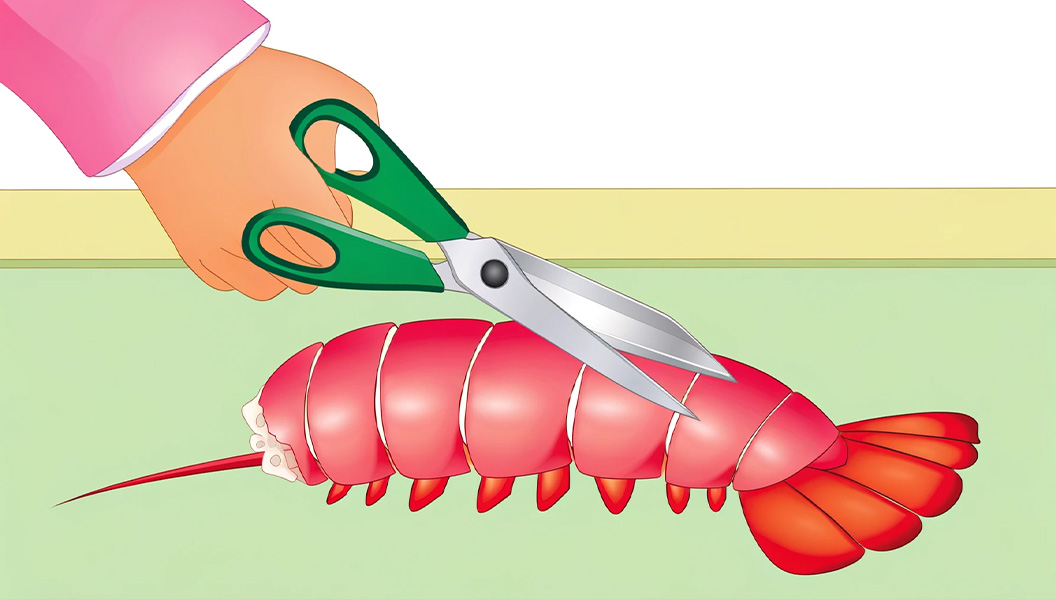
Using kitchen shears or a sharp knife, make a straight, lengthwise cut through the top of the shell, starting at the identified point and ending at the tail end. Ensure you're cutting through the hard top shell only and not into the meat.
Create A V-Shaped Cut
With the cut still open, gently lift the sides of the shell apart to expose the meat. You'll notice that the meat is still attached along the bottom (soft) side. Make another shallow cut along the length of the exposed meat, creating a V-shaped incision. This cut allows for easier tail spreading while keeping the meat attached to the shell.
Spread The Shell Apart
Carefully open the shell by gently pulling the two halves apart, but keep the meat attached at the tail end. Use your fingers to gently press down on the sides of the shell to create a slight separation, which allows the meat to spread apart slightly.
Season And Grill
At this point, the butterflied lobster tails are ready for seasoning. You can now cook or grill the lobster tail according to your preferred methods, such as grilling, broiling, or baking.
FAQs
Why Is The Lobster Tails Mushy?
Mushy lobster tails can result from several factors, primarily overcooking or improper freezing and thawing methods. When a lobster tail is cooked for too long, its protein fibers break down excessively, losing their firmness and becoming soft and mushy. Additionally, if the lobster tail is frozen and then thawed improperly, it can lead to a breakdown of its cellular structure, causing the meat to release excess water when cooked and turn mushy. Ensuring optimal freshness and using the correct cooking time and methods are crucial to preserving the desired texture of lobster meat, keeping it succulent and firm rather than mushy.
What Are The White Foam On The Cooking Lobster Tails?
The white foam that may appear while cooking lobster tails is a natural occurrence and nothing to be concerned about. It is formed due to proteins released from the lobster meat during cooking. The foam can vary in quantity and may be more noticeable when boiling or steaming lobster tails.
While the foam is harmless, some chefs prefer to skim it off for aesthetic reasons. To remove any foam that rises to the surface of the cooking liquid, you can simply use a slotted spoon or a fine-mesh skimmer.
Should I Remove The Vein From Lobster Tails Before Cooking?
Most lobster tails from the grocery store will contain veins. The vein in a lobster tail is the digestive tract, and some people prefer to remove it before cooking for aesthetic reasons or to remove any potential grit. Although removing the vein is not mandatory, you can create a shallow incision along the top of the tail and delicately extract the vein using your fingers or a small knife.
How Do I Prevent Overcooking Lobster?
Overcooked lobster can become tough and rubbery. To prevent this, it's important to monitor cooking times carefully. Use a meat thermometer to check for doneness and remove the lobster from heat when it reaches 145°F (63°C). Also, consider slightly undercooking the lobster if you use the residual heat for further cooking.
